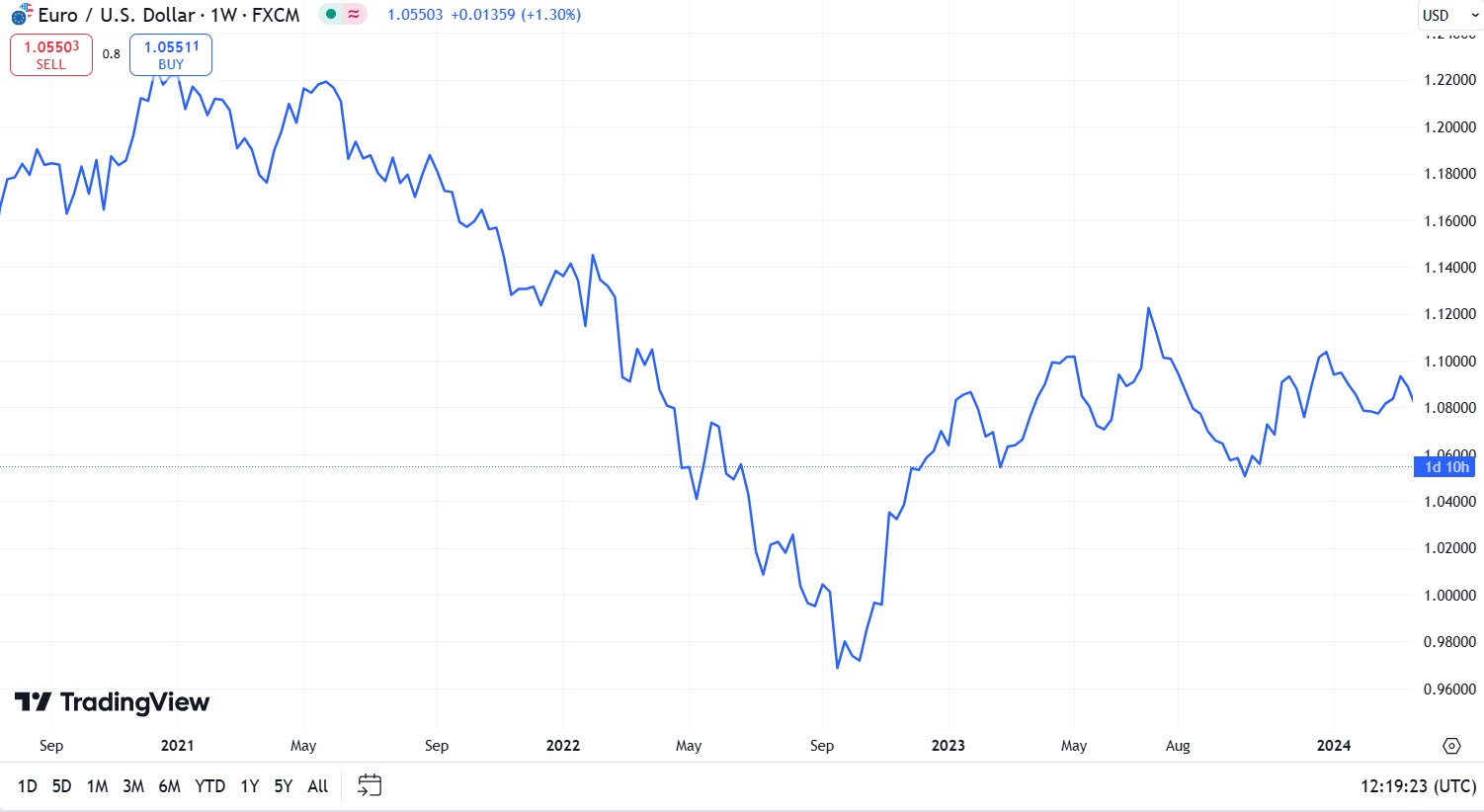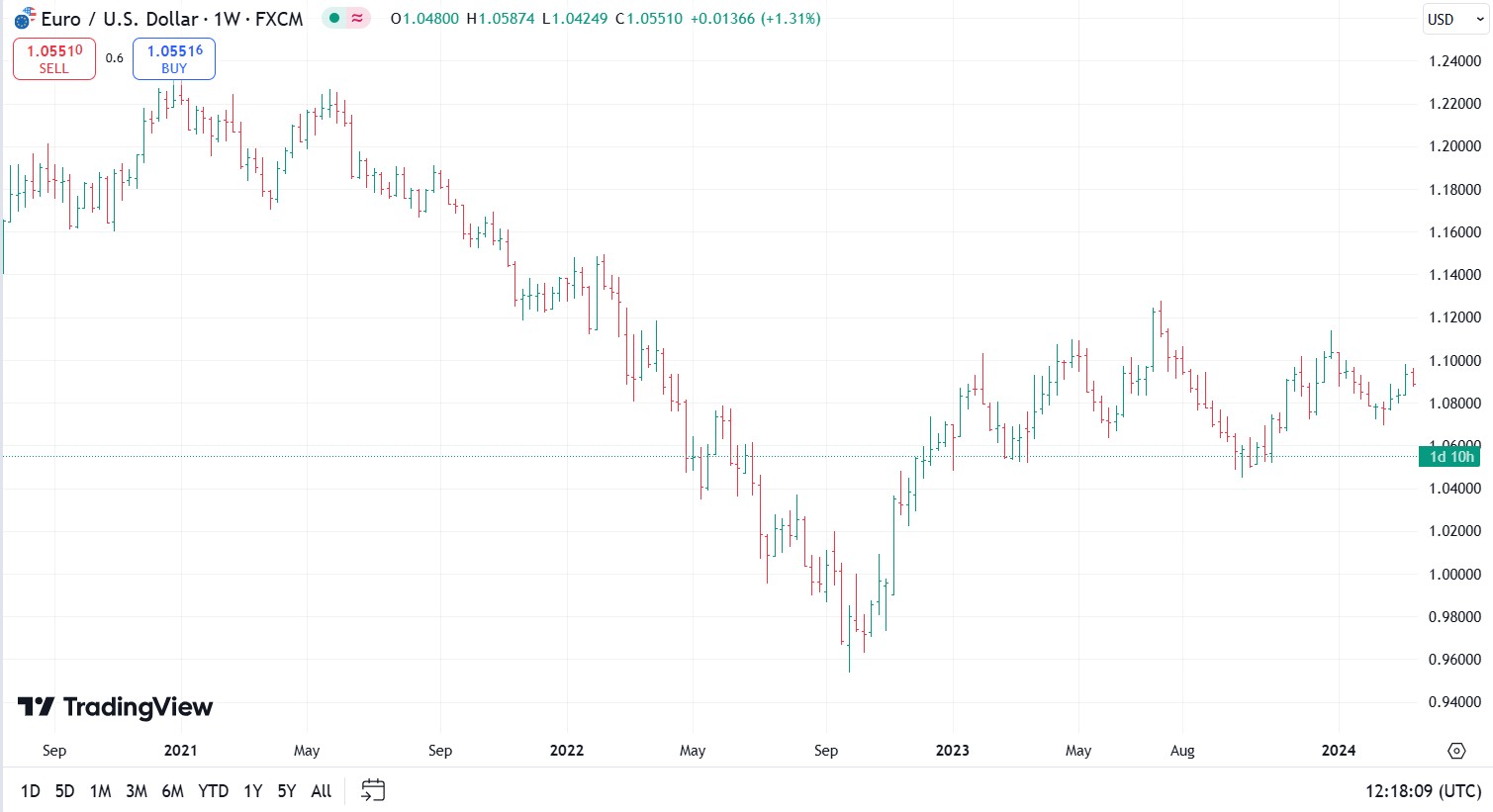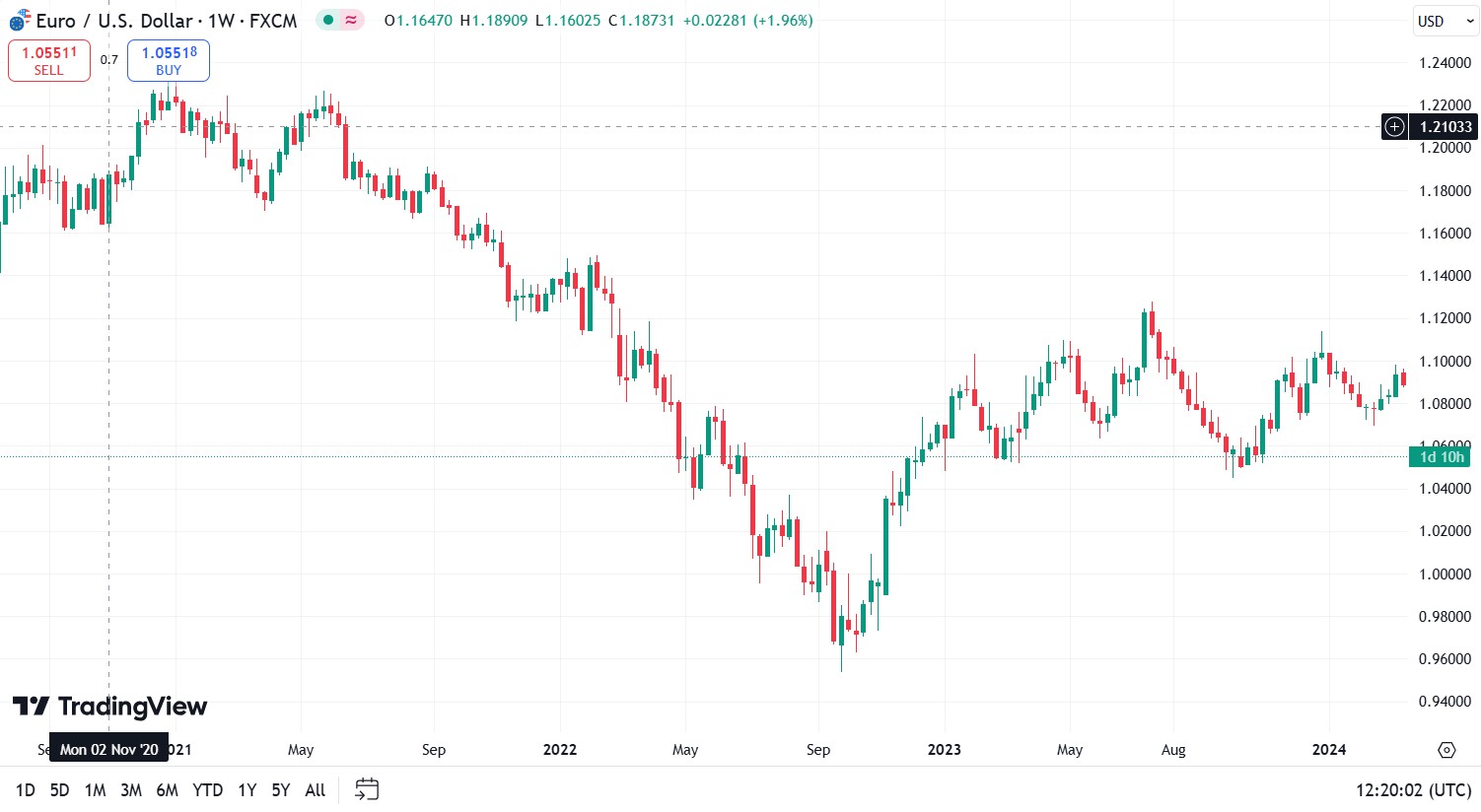How To Make Money On Forex: A Step By Step Guide



Editorial Note: While we adhere to strict Editorial Integrity, this post may contain references to products from our partners. Here's an explanation for How We Make Money. None of the data and information on this webpage constitutes investment advice according to our Disclaimer.
Forex allows anyone to make money by speculating on currency price movements. You need to:
The foreign exchange (Forex) market is a global marketplace where currencies are exchanged, bought, and sold at current or determined prices. It plays a vital role in global trade and finance by determining exchange rates. Recent reports show that the daily trading volume in the Forex market has reached $8.3 trillion, highlighting its massive scale and impact. Let’s explore the Forex market and how one can trade currencies profitably.
How to make money on Forex — fast introduction
Once you have understood the terminologies above, you can take your first step and dive into the world of Forex. Here are some steps that you should follow to accomplish your ambition to ace Forex trading:
Select a broker
It is impossible to ace Forex trading without a broker. So, when selecting one, ensure to check their license and go through all the trading requirements. These requirements may include the minimum deposit required, availability of accounts, platforms available, bonuses, etc.
Once you are satisfied with a broker, don't wait any longer and get registered. A good broker can make the process of how to make money fast with Forex trading much smoother.
| Demo | Min. deposit, $ | Max. leverage | Min Spread EUR/USD, pips | Max Spread EUR/USD, pips | Investor protection | Open an account | |
|---|---|---|---|---|---|---|---|
| Yes | 100 | 1:300 | 0,5 | 0,9 | €20,000 £85,000 SGD 75,000 | Open an account Your capital is at risk. |
|
| Yes | No | 1:500 | 0,5 | 1,5 | £85,000 €20,000 €100,000 (DE) | Open an account Your capital is at risk.
|
|
| Yes | No | 1:200 | 0,1 | 0,5 | £85,000 SGD 75,000 $500,000 | Open an account Your capital is at risk. |
|
| Yes | 100 | 1:50 | 0,7 | 1,2 | £85,000 | Study review | |
| Yes | No | 1:30 | 0,2 | 0,8 | $500,000 £85,000 | Open an account Your capital is at risk. |
Develop a trading strategy
A trading strategy is a plan that covers aspects such as time horizon, tax implications, investing objectives, and risk tolerance. This plan should be quantifiable, consistent, and verifiable. Simply put, a trade should have clear and price goals while curating a trading strategy.
Here are three top trading strategies:
Breakout day trading strategy. This strategy focuses on a certain position or asset's price after it successfully clears a specific level. When an asset crosses a specified threshold, volatility increases, and as a result, the prices follow the direction of the breakout.
Momentum bull flag strategy. This strategy features a chart pattern with a vertical rise. The bull flag strategy commences from the consolidation period.
Swing trading. In this strategy, a trader plans to earn profitability over some days, weeks, or months.
Choosing the right strategy is imperative as it determines the amount of money you are willing to trade and your tolerance for risk. This is especially true if you are exploring how to earn money from Forex trading.
Practice on a demo account
Once you have curated a feasible trading strategy for yourself, open a demo account with a broker and start trading. It is important to note that you may face losses on your first trade, but that shouldn't discourage you in any way.
You won't lose anything with a demo account as you will be trading without real money. So, instead of losing hope, analyze the mistakes you may have made due to your lack of knowledge, late/early entry, and many other factors that you might have ignored.
Implement technical analysis
Analyze price charts to identify trends and patterns. Use indicators like moving averages, RSI, MACD, and Bollinger Bands.
Open a real account
Research and select a regulated and reliable broker. Open a real trading account to trade with actual money once you're confident in your skills. Start with a small deposit to minimize risk while gaining experience.
Track and adjust
Maintain a trading journal to record and analyze your trades. Continuously refine your strategy based on performance.
What are Forex advantages?
Forex trading offers several advantages that make it appealing to traders worldwide.
High liquidity. With a daily trading volume exceeding $7.5 trillion as of April 2022, the Forex market is the most liquid financial market globally. This high liquidity enables traders to execute large orders without significantly affecting currency prices.
24-hour market access. Operating 24 hours a day, five days a week, the Forex market allows traders to engage in transactions at any time, accommodating various schedules and time zones.
Low transaction costs. Forex trading typically involves low transaction costs due to tight bid-ask spreads, making it cost-effective for traders.
Leverage opportunities. Forex brokers often offer significant leverage, enabling traders to control larger positions with a smaller amount of capital. While this can amplify profits, it also increases the potential for losses.
Diverse trading strategies. The Forex market supports a variety of trading strategies, including day trading, swing trading, and scalping, allowing traders to choose approaches that align with their goals and risk tolerance.
Accessibility for beginners. Many Forex brokers offer free demo accounts, enabling beginners to practice trading with virtual funds before committing real money. Additionally, the market's low capital requirements make it accessible to new traders.
Potential for profit in rising and falling markets. Forex trading allows participants to profit from both appreciating and depreciating currencies by taking long or short positions, providing opportunities regardless of market direction.
| Aspect | OTC Forex market | Exchange-traded Forex market |
|---|---|---|
| Structure | Decentralized; trades occur directly between parties. | Centralized; trades occur via a regulated exchange. |
| Regulation | Lightly regulated, varies by region. | Strict regulatory oversight by authorities. |
| Transparency | Limited; prices set by dealers. | High; prices and trade data are public. |
| Standardization | Flexible contract terms. | Fixed contract terms. |
| Liquidity | High but varies by currency pair and market. | Generally high, but lower for niche pairs. |
| Counterparty Risk | Higher due to direct transactions. | Lower; central clearinghouse guarantees trades. |
| Trading Hours | 24/5 continuous trading. | Limited to exchange hours. |
| Leverage | High leverage offered by brokers. | Regulated leverage, typically lower. |
| Accessibility | Open to retail and institutional participants. | Higher entry barriers, often favoring. |
How to trade on Forex: basic facts
If you are new to Forex, you will come across various terms and conditions that may seem alien to you. So, if you want to know how to make money with Forex, familiarizing yourself with these terms and conditions is imperative. Also, a better understanding will help you curate your Forex strategy with convenience.
What is Forex trading?
Let's start with what this concept is and how to make money trading Forex. Simply put, Forex trading works like currency exchange that we all do while traveling to another country. A trader sells one currency and buys another, and the fluctuation in the exchange rate is due to supply and demand.
In a Forex market, every currency is given a unique three-letter code. For instance, the US dollar has a code, USD. Euro is the second most popular currency in Forex, and its code is EUR.
In Forex trading, all currencies are expressed in currency pairs containing two currencies that are supposed to be exchanged.
Some major pairs of Forex trading are:
EUR/USD
USD/JPY
GBP/USD
AUD/USD
Now every pair represents the exchange rate for both currencies. Here's how you can interpret this information:
In a EUR/USD pair, the left currency is considered the base.
Simultaneously, the right currency, USD in this case, is the quote.
The exchange rate reflects the amount of quote currency required to buy a unit of the base currency. Therefore, the base currency is always represented by 1 unit while the quote currency keeps on changing.
So, for instance, if the exchange rate of EUR/USD is 1.5, it means $1.5 is required to buy €1.
A rise in exchange means that the value of the base currency has risen more than the value of the quote currency. Similarly, a decrease in value means that the value of the base currency has fallen.
Three ways in Forex trading
There are three different ways of Forex trading, and each helps a trader achieve a particular goal:
Spot market. Considered the primary market where different currency pairs and exchange rates are swapped and determined, as per supply and demand.
Forward market. Instead of trading now, traders can lock an exchange rate and trade on that same rate but on a future date.
Futures market. This is quite similar to the forward market, except the contract is done on an exchange as opposed to privately.
Forex trading tools
There are three types of quote charts used in Forex trading:
Line charts. These are the most basic ones and identify all the currency trends in the big picture. This chart's trend lines help devise different trading strategies. A line chart is considered a starting point for trading analysis.

Bar charts. Represent different trading time periods. They are more specific than most line charts.

Candlestick charts. These are much easier to comprehend than the above two options. A candle's upper portion is the opening and highest price point, while its lower portion represents the closing and lowest price point.

You may also come across time-frames in Forex trading. This term refers to a designated time on which trading commences. Forex time frames are usually measured in weeks, days, hours, or minutes.
Once you choose your trading strategy and know about the trading plan you want to follow, you can use time frame analysis and start exploring how to use Forex to make money.
Tips to avoid losing money in Forex
Here are practical tips to avoid losing money in Forex trading:
Conduct thorough research. Before entering the Forex market, understand how it works, including the factors influencing currency movements. Stay informed about global events and economic developments.
Develop a trading plan. Create a plan outlining your strategy, risk tolerance, and financial goals. A clear plan helps you stay focused and disciplined.
Manage risk effectively. Set a maximum amount of capital to risk per trade and stick to it. Use stop-loss orders to protect against significant losses.
Control emotions. Avoid decisions driven by fear or greed. Stick to your plan and make logical, not impulsive, decisions.
Understand taxes. Know the tax rules for Forex trading in your country. Consulting a tax professional can help you manage obligations properly.
It’s better to avoid guessing and stick to a measured approach that matches your financial goals
As a beginner in Forex trading, one key step to managing risks is deciding how much to trade based on the likelihood of a successful trade and the potential reward compared to the risk. This simple yet effective calculation helps you avoid overcommitting your funds and allows you to grow your account steadily. It’s better to avoid guessing and stick to a measured approach that matches your financial goals.
Another practical tip is to look at how currency pairs interact. Some pairs tend to move in the same direction, while others behave oppositely. By understanding these dynamics, you can spread your trades across pairs that don’t react the same way, protecting yourself from unexpected market swings. This way, your trades work together to provide stability in your portfolio.
Conclusion
Forex trading is not just a straightforward path to making money; it is a journey of learning, strategizing, and adapting. As you dive deeper, the complexities of the market and the importance of proper risk management will become clearer. While the initial steps may feel challenging, consistent practice and careful planning pave the way for long-term success. By following proven strategies and staying disciplined, you can confidently navigate the Forex market and achieve your trading goals.
FAQs
How much money do you require to start Forex trading?
If you want to start trading right now, an amount equal to $100 would be enough to begin with. If you demand more flexibility, $500 will give you more return and income.
How long does it take to learn how to trade Forex profitably?
Typically, it takes around one year to learn Forex trading. You will easily understand the technical side within a few wells. However, the risk management aspect takes one year to fully comprehend.
Is Forex a reliable way to make money?
Yes, it is. However, it isn't an easy way, and you may require some time creating strategies to earn some money through this trading option.
How much do most Forex traders make on average?
It all depends. With Forex trading, a professional trader can make anywhere between $1000 to $5000 per day.
Related Articles
Team that worked on the article
Igor is an experienced finance professional with expertise across various domains, including banking, financial analysis, trading, marketing, and business development. Over the course of his career spanning more than 18 years, he has acquired a diverse skill set that encompasses a wide range of responsibilities. As an author at Traders Union, he leverages his extensive knowledge and experience to create valuable content for the trading community.

Dr. BJ Johnson is a PhD in English Language and an editor with over 15 years of experience. He earned his degree in English Language in the U.S and the UK. In 2020, Dr. Johnson joined the Traders Union team. Since then, he has created over 100 exclusive articles and edited over 300 articles of other authors.
Mirjan Hipolito is a journalist and news editor at Traders Union. She is an expert crypto writer with five years of experience in the financial markets. Her specialties are daily market news, price predictions, and Initial Coin Offerings (ICO).
Cryptocurrency is a type of digital or virtual currency that relies on cryptography for security. Unlike traditional currencies issued by governments (fiat currencies), cryptocurrencies operate on decentralized networks, typically based on blockchain technology.
An investor is an individual, who invests money in an asset with the expectation that its value would appreciate in the future. The asset can be anything, including a bond, debenture, mutual fund, equity, gold, silver, exchange-traded funds (ETFs), and real-estate property.
Forex leverage is a tool enabling traders to control larger positions with a relatively small amount of capital, amplifying potential profits and losses based on the chosen leverage ratio.
Scalping in trading is a strategy where traders aim to make quick, small profits by executing numerous short-term trades within seconds or minutes, capitalizing on minor price fluctuations.
Volatility refers to the degree of variation or fluctuation in the price or value of a financial asset, such as stocks, bonds, or cryptocurrencies, over a period of time. Higher volatility indicates that an asset's price is experiencing more significant and rapid price swings, while lower volatility suggests relatively stable and gradual price movements.






























































































































